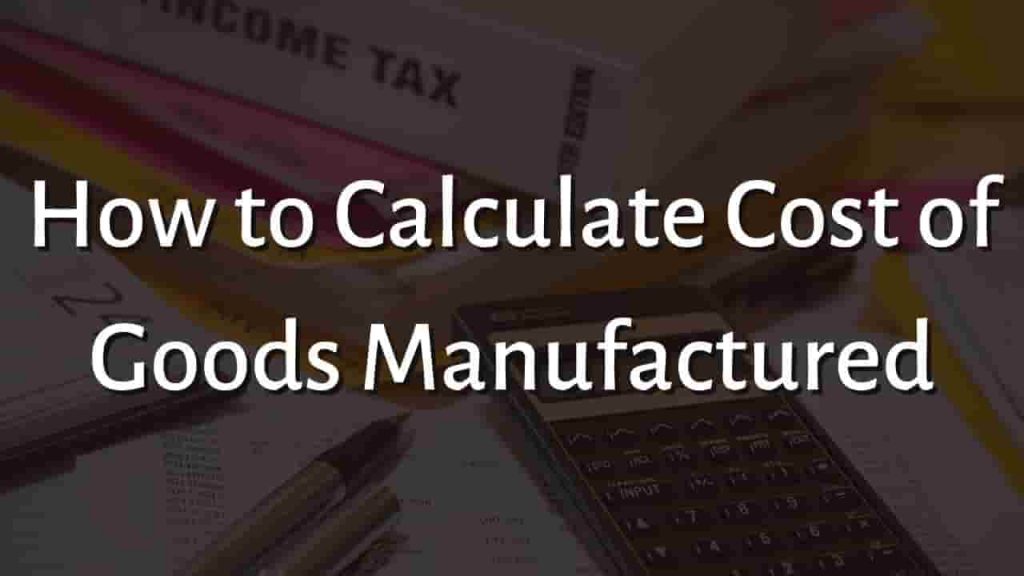How to Calculate Cost of Goods Manufactured
Understanding every area of your business is important for every aspiring entrepreneur. This includes knowing how much you produced, lost, sold, and manufactured.
Manufacturers, unlike retailers, have distinct inventory categories such as raw materials, work in process, and finished items, all of which contribute to the computation of the cost of goods manufactured, an essential indicator for assessing your company’s health and position.
What is Cost of Goods Manufactured?
The cost of goods manufactured (COGM) is a calculation used to determine if manufacturing expenses are excessively high or excessively low when compared to income. The equation computes the production expenses associated with items completed during a certain time period.
In other words, the overall cost for a corporation to convert inventory into finished products.
The overall production cost of items created and finished by the firm during an accounting period is referred to as the cost of goods manufactured.
Typically, organizations whose primary line of business is manufacturing develop a separate schedule to compute the cost of manufactured items in order to assess their cost-effectiveness.
Calculation of Cost of Goods Manufactured
The cost of goods manufactured may be estimated by adding the overall cost of production, which includes all direct labor expenses, direct material costs, and other factories’ overhead costs, to the opening work-in-process stock, and then subtracting the ending inventory in the process stock.
This is the company’s cost sheet, which contains the prime cost as well. As a result, summing all of the manufactured stage inventory and all direct expenditures equals the cost of goods made, which is then divided by the number of units produced to provide the cost of goods manufactured.
Cost of Goods Manufactured Formula
The cost of goods manufactured formula is given below:
Cost of Goods Manufactured = Direct Materials Cost (+) Direct Labor Cost (+) Manufacturing Overhead (+) Beginning Work in Process Inventory (-) Closing Work in Process Inventory
Cost of Goods Manufactured Example
Mr. B has been working in ABC manufacturing, and he has been requested to develop the cost sheet for the Product “XYZ” and submit it at the next meeting.
The following information was gathered from the production department.
- Number of Units: 600
- Material Cost Per Unit: 350
- Labor Cost Per Unit: 300
- Factory Overheads: 240000
- Opening WIP Inventory: 78000
- Closing WIP Inventory: 64500
You are required to calculate the cost of goods manufactured based on the above data.
Direct material and labor costs are not given. We must first compute the same.
Simply multiply the cost per unit by the number of units as shown below:
Direct Material Cost = 250 x 500
Direct Material Cost =125,000
Direct Labor Cost = 200 x 500
Direct Labor Cost = 100,000
Cost of Goods Manufactured = Direct Materials Cost (+) Direct Labor Cost (+) Manufacturing Overhead (+) Beginning Work in Process Inventory (-) Closing Work in Process Inventory
Cost of Goods Manufactured = 125000 + 100000 + 240000 + 78000 – 64500
Cost of Goods Manufactured = 478500
Hence, the cost of goods manufactured will be 478500.
Why is the Cost of Goods Manufactured Important?
As previously said, COGM is a useful approach to acquire a rough concept of your production expenses and how they relate to business success. Knowing the COGM enables you to boost the bottom line by making appropriate modifications.
Furthermore, understanding the COGM enables businesses to:
- Improve inventory management
- Maintain more accurate financial records
- Create more effective pricing strategies
- Monitor business growth.
COGM is an important KPI to measure in every manufacturing organization because of these advantages.
Difference Between Cost of Goods Manufactured and Total Manufacturing Cost
The Cost of Goods Manufactured and Total Manufacturing Cost is words that are the same. However, if the Total Manufacturing Cost includes direct material costs, direct labor expenses, and firm overhead costs, the Cost of Goods Manufactured includes the change in Work-in-Process Inventory.
The Total Manufacturing Cost, on the other hand, is a component of the Cost of Goods Manufactured.
Difference Between Cost of Goods Manufactured and Cost of Goods Sold
The COGM and the COGS are both extremely similar words, however, they should not be mistaken.
While the Cost of Goods Manufactured includes both completed items that have already been sold and those that are still in inventory waiting to be sold, the Cost of Goods Sold only includes the costs of creating the products that were sold during the accounting period.
Conclusion:
The Cost of Goods Manufactured is an effective tool for gauging a manufacturing company’s production costs and using the data to identify problem areas and make changes.
Although it is similar to and connected to both Total Manufacturing Cost and Cost of Goods Sold, COGM is a distinct term with distinct functions.
The COGM formula includes the Total Manufacturing Cost as well as the beginning and ending WIP inventory; however, the Cost of Goods Sold formula includes the COGM as well as the beginning and ending inventory.
A manufacturing industry inventory system, such as an MRP system, assists organizations in tracking production costs and automatically calculating numerous Metrics, such as the COGM.
For more click here and if you are looking for full forms of different acronyms and words then check out this list you really gonna find this helpful. We also have an Essay on every topic, Check the complete list here. If you are Studying in Matric Free Video Lectures of Maths, Physics and English are here, and we have got you covered for I.COM Business Maths also.







